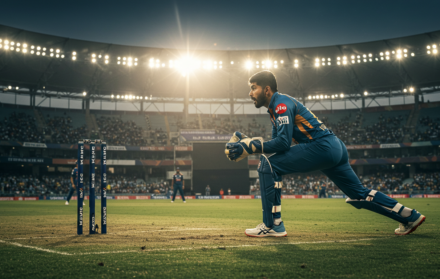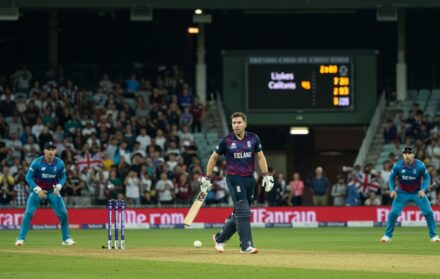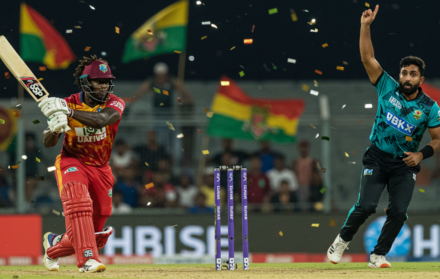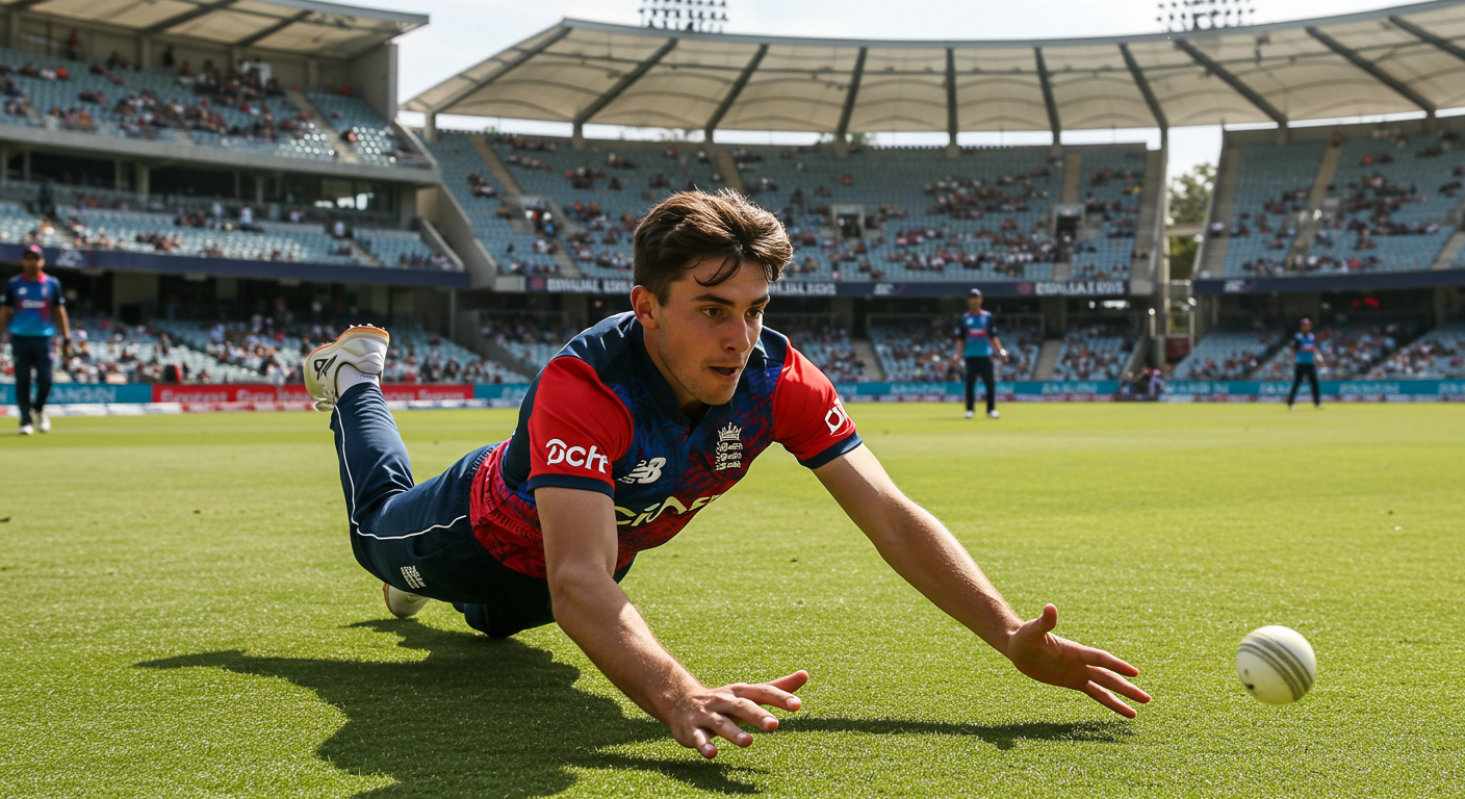
T20 Fielding Drills Every Player Should Practise
In T20 cricket, a brilliant piece of fielding can be just as decisive as a five-wicket haul or a last-ball six. With matches often swinging on razor-thin margins, fielding has evolved from an afterthought into a specialist craft. Saving ten runs, holding a pressure catch, or pulling off a run-out isn’t just helpful — it’s match-defining.
Unlike longer formats where fielding errors might be absorbed over time, T20 punishes every slip. One mistimed dive or fumbled boundary save can cost a game. That’s why modern players spend as much time honing their fielding skills as they do perfecting their batting or bowling techniques.
Yet it’s not enough to throw yourself around the field. Smart fielding drills build technique, reflexes, decision-making, and composure under pressure — all crucial in the high-speed environment of short-format cricket.
This article covers the T20 fielding drills every serious player should incorporate into their training routines. From ground fielding basics to boundary rope brilliance, these drills are designed to sharpen the instincts that turn games in the blink of an eye.
1. Rapid Pick-Up and Throw Under Pressure
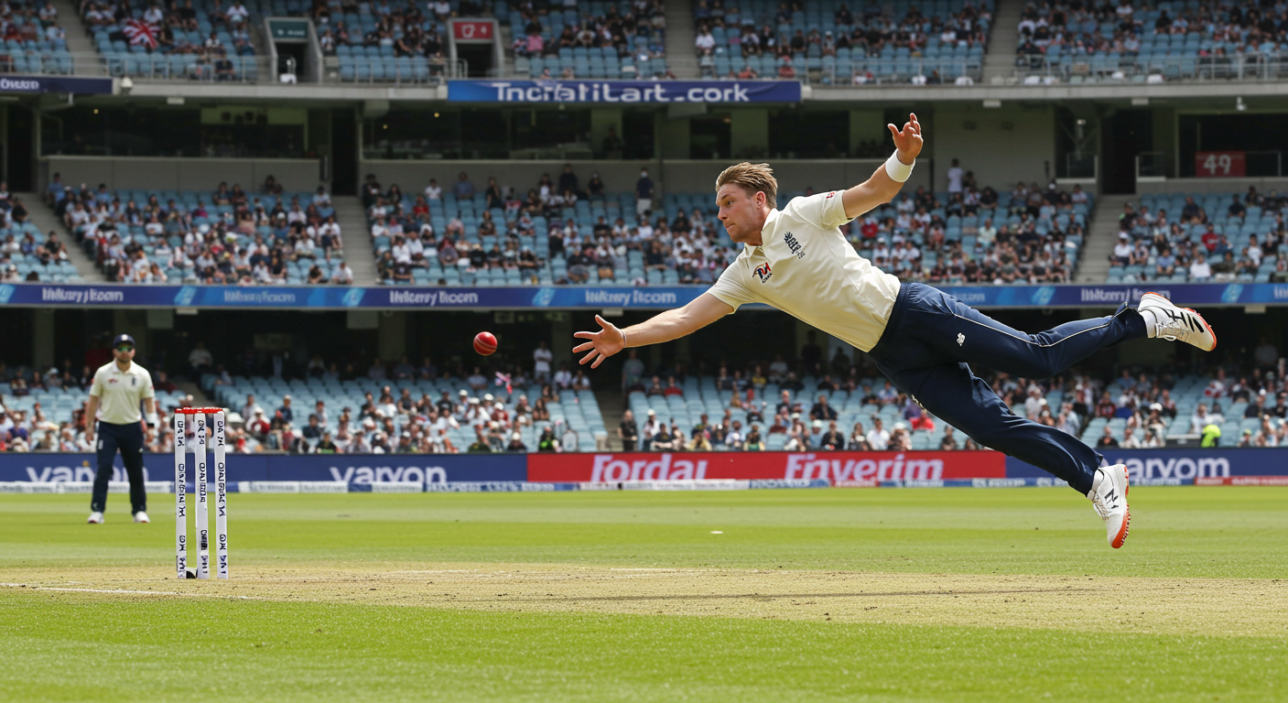
In T20 cricket, fielders often have fractions of a second to turn a stop into a genuine run-out opportunity. Practising rapid pick-up and release techniques helps players reduce that window even further, applying pressure to even the fastest runners.
This drill starts with a coach or teammate rolling balls at varying speeds and angles. The player must sprint in, collect the ball cleanly with one hand, and fire a direct throw at the stumps in one smooth motion. Emphasis should be on getting low early, staying balanced through the pick-up, and using minimal steps to release the ball.
Adding random calls to simulate real match chaos — such as last-second changes of target stump — sharpens decision-making and composure under pressure. The ability to adjust your body without losing momentum is vital for consistent success.
Among the most critical T20 fielding drills, rapid pick-up and throw exercises build muscle memory for those clutch moments. When done right, they turn hopeful stops into wicket-taking moments and can swing tight matches your team’s way.
2. Boundary Riding and High-Catch Recovery
T20 cricket demands fielders who can patrol the rope with confidence. Saving sixes, judging skiers under lights, and flicking catches back into play have become essential skills for outfielders. Practising these high-pressure situations regularly makes the extraordinary feel routine.
This drill involves a coach or thrower firing high balls towards the boundary. Fielders must backpedal, track the flight, and practise both direct catches and juggling saves — pushing the ball back into play before stepping over the rope, then recovering for a second catch or quick return.
It’s not just about athleticism. Reading the ball early, maintaining body balance near the rope, and having the awareness to stay legal are all skills developed through repetition. Using boundary markers during practice also trains fielders’ spatial awareness, a critical aspect often overlooked.
Effective T20 fielding drills incorporate the exact game scenarios players will face — frantic catches under lights, swirling winds, and tight spaces. Mastering boundary recovery techniques turns potential sixes into wickets and transforms pressure overs into breakthroughs.
3. One-Handed Pick-Up and Throw for Close-Fielders
Close-in fielders — particularly at backward point, cover, and midwicket — have to react almost before the batter finishes their shot. Speed is everything, and two-handed pick-ups often take too long. That’s where one-handed ground fielding becomes a weapon.
This drill involves rolling or hitting firm ground balls at fielders from around 5–15 metres away. Players practise scooping the ball cleanly with their dominant hand and releasing it towards the stumps or keeper in one seamless motion. Focus is placed on soft hands, keeping low, and using quick, explosive footwork to generate throwing momentum.
Adding variations — like deflections off the pitch or uneven bounces — builds adaptability under match conditions. Players also benefit from alternating between underarm flicks for close throws and shoulder-height releases for direct hits over longer distances.
Among the essential T20 fielding drills, one-handed pick-up and throw routines sharpen reactions and create invaluable run-out chances. Every half-second saved in these exchanges keeps the batting side under pressure and maintains momentum in the field.
4. Diving Saves at Full Stretch
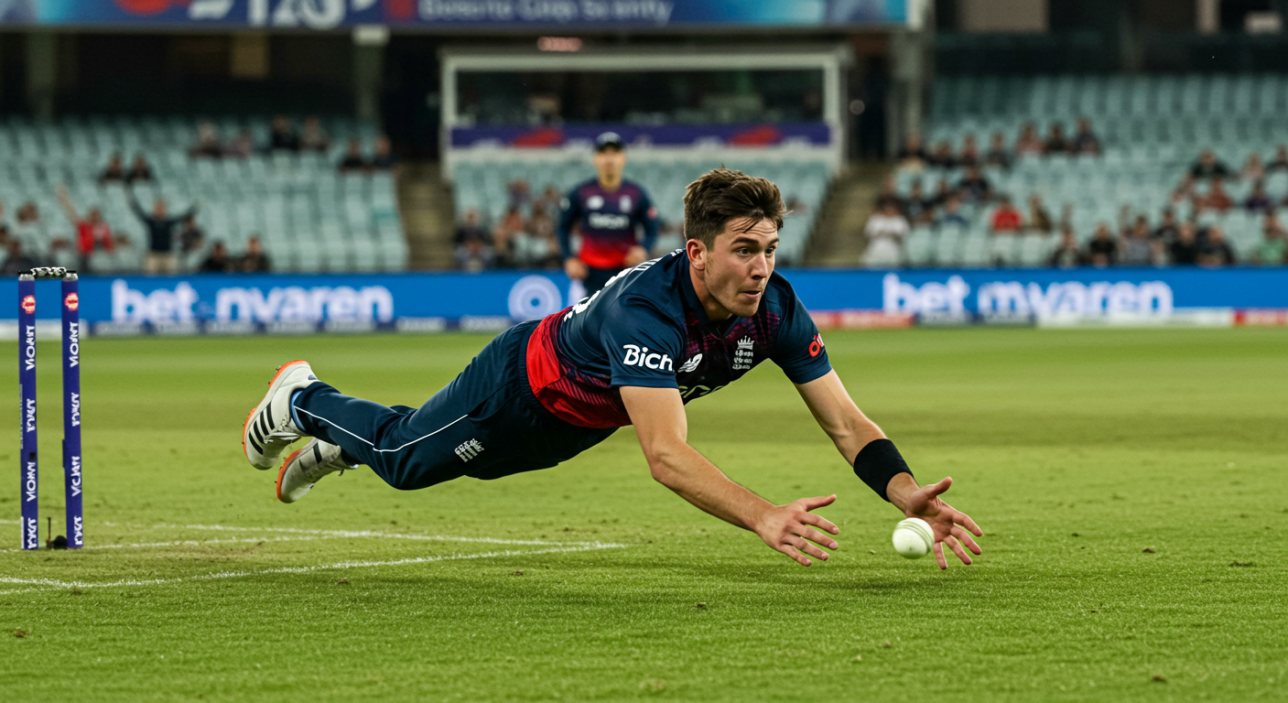
In T20 cricket, the difference between a four and a dot ball can decide a match. Fielders capable of making full-stretch dives, whether saving boundaries or cutting off drives in the ring, have an enormous impact. But effective diving isn’t just about effort — it’s about technique.
This drill sets up cones or targets spaced wide apart. Fielders start in the centre and react to balls struck or thrown towards either side. They must sprint, dive at full length, land safely, and either secure the ball or flick it back towards the stumps in one motion.
Proper landing mechanics — leading with the correct shoulder and rolling after impact — are crucial to avoid injury and stay mobile. Drills should also simulate match pace: players often dive on hard pitches, not just lush outfields, so ground conditions need to be factored in.
Good T20 fielding drills create muscle memory for these commitment plays. A clean full-length dive can halt a fast outfield boundary, save crucial runs, and inject energy into a team. It’s not just about stopping the ball — it’s about lifting the side’s intensity exactly when it’s needed most.
5. Relay Throws and Cut-Off Drills
In T20 matches, long boundaries and powerful batters mean relay throws are essential for saving runs and converting half-chances into dismissals. Training players to execute fast, accurate relay throws ensures that even balls struck into the deep don’t automatically become fours or easy threes.
Set up a drill where an outfielder sprints to collect a ball near the boundary, turns quickly, and fires a throw to a cut-off fielder around halfway in. The cut-off fielder then completes the throw to the stumps or keeper without losing rhythm. Timing, positioning, and quick communication are crucial.
Practising this under fatigue — with multiple throws in rapid succession — mimics the real conditions of a match where players are under physical and mental pressure. Emphasis should also be placed on low, fast throws that are easy to collect.
Among vital T20 fielding drills, relay throwing builds teamwork, accuracy, and situational awareness. It’s the difference between conceding an extra run and executing a brilliant run-out from 60 metres away.
6. Reaction Drills for Close Catches
Infield catches in T20 are often sharp, brutal, and offer no second chances. A fielder at point or cover might have half a second to react to a flashing cut or drive. Quick reflexes aren’t just a bonus — they’re a necessity.
This drill involves a coach or teammate hitting balls from close range using a reaction bat or throwing ball feeds randomly at different heights and speeds. The fielder must catch, parry, or smother the ball instinctively, keeping their eyes level and hands soft.
Adding unpredictability — such as using uneven balls that bounce differently or hitting multiple balls at once — trains players to trust their reactions without overthinking. It also forces them to stay low and balanced, ready to move in any direction.
Good T20 fielding drills like this help fielders not only catch tough chances but also deflect and recover balls that might otherwise leak runs. In matches where even 10–15 extra runs can decide outcomes, sharpening close catching reflexes is a non-negotiable part of fielding preparation.
7. Blind-Side Awareness and Recovery Drills

One of the most overlooked skills in T20 fielding is spatial awareness — knowing where your teammates, the ball, and the boundary are even when you can’t see them all at once. Players often have to dive backwards, track skied balls over their shoulders, or make snap decisions without a clear line of sight.
Blind-side drills involve fielders starting with their backs to the feeder, who calls their name before launching a ball into the air. The fielder must turn, locate the ball quickly, and complete the catch or fielding action cleanly. It forces quick head movement, fast judgement, and recovery under uncertain conditions.
Incorporating angles, boundary markers, and distractions during the drill simulates match-day chaos, helping players trust their instincts rather than waiting for the perfect view.
T20 fielding drills that build blind-side awareness prepare players for real-world challenges — not just perfect, practice-session catches. It’s these messy, uncomfortable moments that define top fielders, the ones who stay sharp when the ball isn’t gift-wrapped for them.
8. Underarm Flicks and No-Time Throws
Not every run-out involves a full wind-up and direct hit. In tight run-out chances — especially around the stumps — underarm flicks are quicker, safer, and often more effective. Whether you’re a bowler fielding off your own bowling or a fielder sprinting in from the ring, knowing how to use a quick, accurate underarm can change the game.
This drill involves players working in pairs, standing 5–8 metres apart with a stump in the middle. One fields a rolling ball at pace and uses a flicked underarm release — either off the dominant hand or using a back-flick technique — to hit or pass close to the stump.
Adding variations — such as turns before the throw or flicks while off balance — builds muscle memory for game-day awkwardness. Timing and control are more important than power.
While often dismissed as basic, underarm flicks are one of the most practical T20 fielding drills. They train players to stay calm in tight spaces and finish the job when a run-out opportunity arises, even with no time to spare.
9. Sliding Stops and Rope Recovery
Modern outfielders need to do more than chase balls to the boundary — they need to slide, stop, turn, and throw in one flowing movement. Sliding saves aren’t just about flair. They’re about stopping certain fours and keeping set batters under pressure, even in the dying overs.
To practise, players sprint towards a moving ball, time their drop into a slide with the front leg leading, scoop the ball mid-slide, and recover into a throw or relay. Doing this drill on grass or turf (and with proper protection) helps players get comfortable with real-match techniques and rough ground contact.
Working on both sides of the body is key. Fielders should learn to slide right and left with equal confidence. Drills that simulate fatigue — such as running two or three reps in succession — help train decision-making when the legs are tired and the game is on the line.
Sliding drills are among the most game-changing T20 fielding drills. They not only save runs but intimidate batters into second thoughts. An outfielder who covers ground fast and commits to the slide becomes a visible sign of intensity — something every fielding side wants.
Conclusion: Why T20 Fielding Drills Define Winning Teams
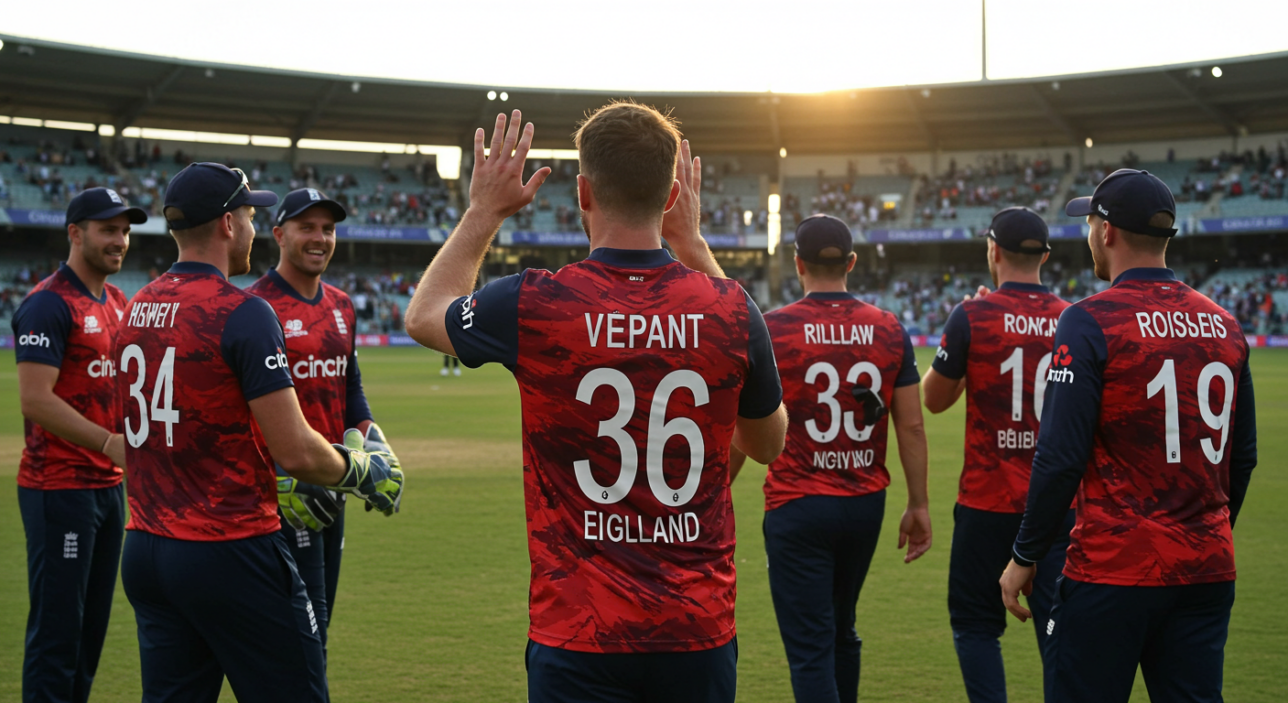
In a format where games are often decided in the final few balls, fielding is no longer optional — it’s a frontline discipline. The right T20 fielding drills don’t just sharpen reflexes or tidy up technique; they build match-readiness, situational awareness, and the confidence to own big moments when they arrive.
From diving stops to boundary flicks, sharp throws to underarm saves, the best fielders are those who’ve drilled the difficult plays until they feel instinctive. These players don’t just react — they anticipate. And anticipation, in a format as fast as T20, is gold dust.
It’s easy to focus training around batting and bowling — but the great teams put just as much effort into their fielding units. These are the sides that turn fifties into forties, convert ones into run-outs, and lift teammates with visible energy in the ring or on the rope.
In short-format cricket, the margins are fine and the opportunities few. Fielders who’ve mastered the right T20 fielding drills are the ones who make those moments count — and more often than not, help win the match.
